Amazing Upcycled Storage Solutions for Your Home
Are you tired of clutter taking over your living space? Do you want to make a positive impact on the environment while enhancing your home? Look no further! This article explores innovative and creative upcycling ideas that not only add storage solutions to your home but also promote sustainability. Upcycling is all about transforming old, unwanted items into something new and functional, allowing you to express your creativity while being eco-friendly. Imagine turning that old dresser you no longer use into a stylish bookshelf or repurposing glass jars into chic storage containers. With a little imagination and effort, you can create beautiful storage solutions that reflect your personality and values. Let’s dive into the world of upcycling and discover practical tips and inspiring projects that will help you transform everyday items into functional storage solutions.
Understanding the importance of upcycling can motivate you to reduce waste and save money. Every year, millions of tons of waste end up in landfills, contributing to pollution and environmental degradation. By choosing to upcycle, you not only give new life to unwanted items but also help to lessen your carbon footprint. Upcycling is like giving your old belongings a second chance, a new purpose, and a new story to tell. It’s a creative journey that allows you to think outside the box and see potential where others see junk. Plus, it can save you a pretty penny. Instead of buying new storage solutions, why not transform what you already have? You’ll be amazed at how much you can save while making your home more organized and stylish!
Selecting suitable materials is crucial for successful upcycling projects. Common household items that can be transformed into storage solutions include old furniture, containers, and textiles. For instance, consider using items like:
- Furniture: Dressers, cabinets, and benches can be repurposed into unique storage pieces.
- Containers: Jars, boxes, and baskets can be creatively transformed into organized storage.
- Textiles: Old clothes and linens can be sewn into stylish storage bags or organizers.
By looking at what you already own through a new lens, you can discover countless possibilities for upcycling. The key is to think creatively and be open to experimentation!
Transforming old furniture into functional storage pieces can breathe new life into your home. Imagine turning an old dresser into a bookshelf or a bench with hidden storage for shoes and bags. The possibilities are endless! For example, you could:
- Paint a tired cabinet in a bold color to make it a statement piece while adding storage.
- Combine multiple old cabinets to create a unique storage unit that fits your style.
These projects not only declutter your space but also add character and charm to your home. Plus, every time you look at your upcycled furniture, you'll feel a sense of accomplishment knowing you made it yourself!
Old cabinets can be reimagined into stylish storage units. You can easily modify them by painting them in trendy colors, adding new hardware, or even cutting them down to fit a specific space. Consider combining two cabinets to create a larger unit or using just the doors to create a chic display for your favorite items. This not only maximizes your storage but also gives your home a unique touch. Don't forget to add personal touches like decorative knobs or stencils to really make it yours!
Explore unique ways to create shelves from reclaimed materials. This part highlights DIY projects for building shelves from pallets, crates, or even old ladders. Imagine a rustic ladder turned into a bookshelf or wooden crates stacked to create a modern shelving unit. These creative solutions not only save space but also serve as eye-catching decor. You can even paint them in vibrant colors to match your interior design!
Containers can be easily transformed into attractive storage solutions. Whether it's glass jars, old boxes, or baskets, these items can be upcycled to enhance your home decor while keeping things organized. For example, you could paint jars in pastel colors and use them to store office supplies or kitchen utensils. Or, take old boxes, cover them with decorative paper, and use them to store toys or craft supplies. The options are endless, and the result is always a beautiful blend of functionality and creativity!
Fabric items can also be upcycled for storage purposes. Old clothes, linens, and fabric scraps can be transformed into stylish storage bags, baskets, and organizers. By sewing or weaving fabric baskets from old textiles, you can create functional and decorative storage options for any room. This not only reduces textile waste but also gives you a chance to showcase your sewing skills!
Learn how to sew or weave fabric baskets from old textiles. This guide provides step-by-step instructions to create functional and decorative storage options for any room. You can use old t-shirts, sheets, or even leftover fabric scraps to create these baskets. They make perfect storage for toys, magazines, or even laundry. Plus, you can customize them to match your home decor!
Old clothing can be repurposed into storage solutions. Explore creative techniques to turn jeans, t-shirts, and other garments into useful organizers while reducing textile waste. For instance, you could turn an old pair of jeans into a stylish tote bag or use t-shirts to create unique storage pouches. This not only gives your old clothes a new life but also adds a personal touch to your home organization!
Q: What is upcycling?
A: Upcycling is the process of transforming old or discarded items into something new and useful, often with a creative twist.
Q: How can I start upcycling at home?
A: Begin by assessing what items you already have that you no longer use. Look for inspiration online or in DIY books, and start with simple projects to build your confidence.
Q: Is upcycling expensive?
A: Not at all! Upcycling can save you money since you're using items you already have. The only costs might be for paint or additional materials if needed.
Q: Can I upcycle furniture?
A: Yes! Furniture is one of the best items to upcycle. You can paint, modify, or combine pieces to create unique storage solutions.
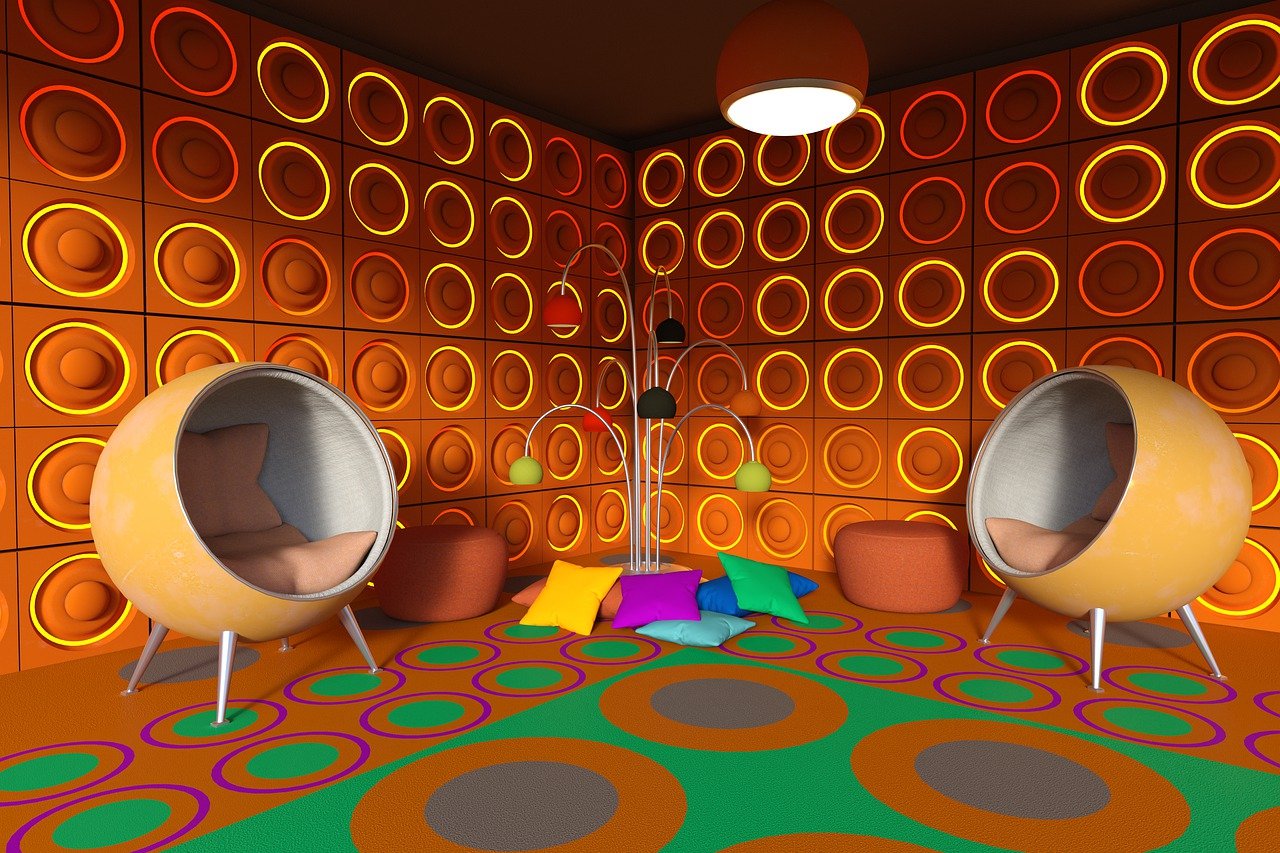
Why Upcycling Matters
In today's world, where consumerism reigns supreme, the practice of upcycling has emerged as a beacon of hope. It’s not just about saving a few bucks or decluttering your home; it’s about making a significant impact on our environment. By choosing to upcycle, you are directly contributing to the reduction of waste in landfills, which is a growing concern. Did you know that millions of tons of waste are generated every year? Upcycling helps combat this by giving new life to items that would otherwise be discarded.
Moreover, upcycling promotes sustainability. When you repurpose old items, you’re effectively reducing the demand for new products, which in turn decreases the resources used in manufacturing. Think about it: every time you choose to upcycle, you’re not just saving an item from the trash; you’re also saving water, energy, and raw materials that would have been used to create a new one. It’s like planting a tiny seed of change that can blossom into something much larger!
But the benefits of upcycling don’t stop there. It also opens up a world of creativity and self-expression. When you take the time to transform an old item, you're not just recycling; you're creating something unique that reflects your personal style. This process can be incredibly fulfilling, allowing you to showcase your artistic side while also making your living space more functional. Just imagine turning an old wooden crate into a chic coffee table or transforming glass jars into stylish storage containers. The possibilities are endless!
In addition to environmental benefits and creative expression, upcycling can also lead to significant financial savings. With the rising costs of living, many people are looking for ways to cut expenses. By upcycling items you already own, you can enhance your home without breaking the bank. Whether it’s reimagining a vintage dresser into a modern storage unit or using old fabric to create new home decor, upcycling allows you to achieve a fresh look at a fraction of the cost.
Ultimately, upcycling is about making conscious choices that benefit both you and the planet. It's a movement that encourages us to rethink our relationship with material possessions. Instead of viewing items as disposable, we can start to see their potential for transformation. So, the next time you’re about to toss something in the trash, pause for a moment and ask yourself: Can this be upcycled? You might be surprised at what you can create!
To summarize, here are a few key reasons why upcycling matters:
- Reduces waste in landfills and minimizes environmental impact.
- Promotes sustainability by lowering the demand for new products.
- Encourages creativity and personal expression.
- Offers financial savings by repurposing existing items.
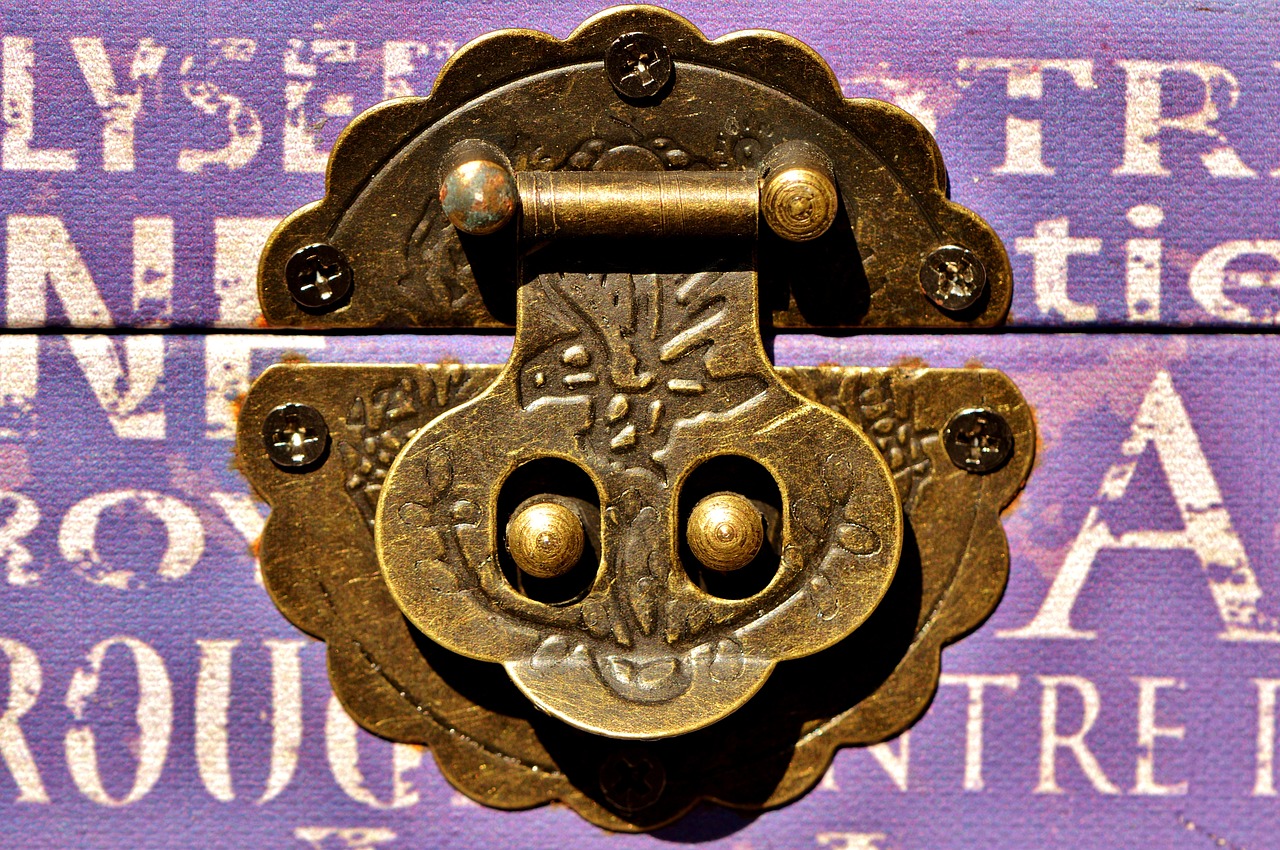
Choosing the Right Materials
When it comes to upcycling, the first step is to choose the right materials. This decision can make or break your project, so it’s essential to think creatively about what you have lying around your home. You might be surprised at the treasures you can find in your closet, garage, or even your kitchen. The beauty of upcycling is that it allows you to see ordinary items in a new light. Instead of throwing away that old chair or those mismatched containers, consider how they could be transformed into something functional and beautiful.
Common household items can be a goldmine for upcycling projects. For instance, furniture, containers, and textiles are among the most versatile materials you can use. Here’s a closer look at some of these items:
- Furniture: Think about old dressers, tables, or chairs that you no longer use. With a bit of creativity and elbow grease, these can be transformed into stunning storage solutions.
- Containers: Jars, boxes, and baskets are perfect for organizing your space. They can be painted, decorated, or repurposed to fit any decor style.
- Textiles: Old clothes and linens can be turned into delightful storage bags or organizers, giving them a new purpose while reducing waste.
Choosing the right materials also involves considering their condition and potential. For example, if you're eyeing an old wooden cabinet, check for sturdiness. A solid piece can be sanded down and painted to create a chic storage solution, while a wobbly one might not be worth the effort. Additionally, think about the aesthetic you want to achieve. If your home has a rustic vibe, reclaimed wood or vintage crates could be perfect. On the other hand, if you prefer a modern look, sleek containers or minimalist designs might be more suitable.
Another tip is to consider the functionality of the materials you choose. For instance, if you need extra storage in your kitchen, old jars can be upcycled into spice holders or utensil containers. Similarly, if you're looking for ways to organize your craft supplies, old shoeboxes can be decorated and used to keep everything tidy. The key is to match the material to your storage needs, ensuring that not only does it look good, but it also serves a practical purpose.
Finally, don’t forget to think about sustainability when selecting materials. Upcycling is all about reducing waste and giving new life to items that might otherwise end up in a landfill. By choosing materials that are already in your home, you’re contributing to a more sustainable lifestyle. Plus, you’ll save money in the process! So, next time you’re about to toss something out, pause and ask yourself: Could this be transformed into something useful? You might just find the inspiration you need for your next upcycling project.
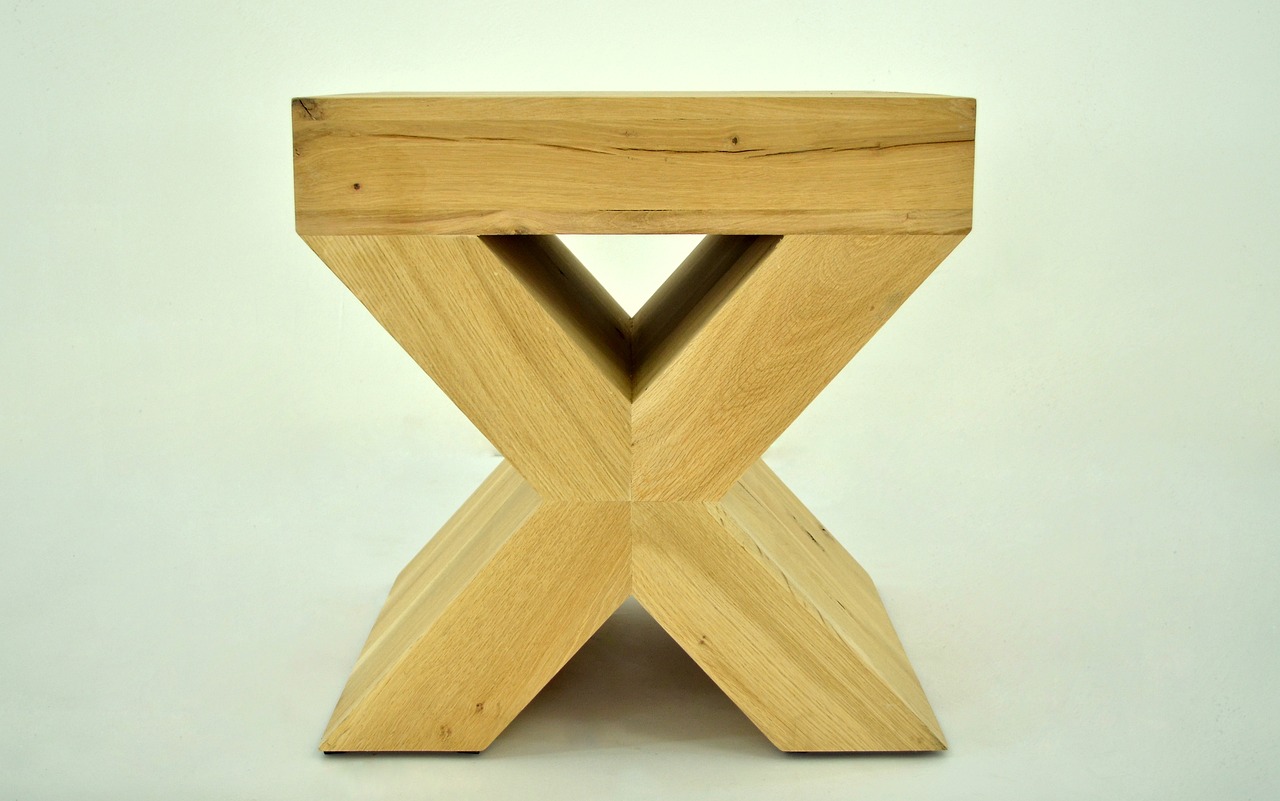
Furniture Upcycling Ideas
Are you tired of looking at that old dresser or worn-out bench sitting in the corner of your room? Well, it’s time to breathe new life into these forgotten furniture pieces through some creative upcycling! Not only does upcycling allow you to save money by repurposing what you already own, but it also contributes to a more sustainable lifestyle by reducing waste. Imagine transforming that old dresser into a stunning bookshelf or turning a mundane bench into a stylish storage unit. The possibilities are endless!
One of the most exciting aspects of furniture upcycling is the ability to customize your pieces to fit your personal style. For instance, you could take a vintage dresser and paint it in a vibrant color or add some chic knobs to create a statement piece that reflects your personality. Alternatively, consider combining two or more pieces of furniture to create something entirely unique. For example, you can stack old crates to form a rustic bookshelf or even use an old ladder as a creative shelving unit. This not only maximizes your vertical space but also adds a touch of whimsy to your decor.
Let’s dive into some specific ideas that can spark your creativity:
- Dresser to Bookshelf: Remove the drawers and paint the exterior to create a stunning bookshelf that can hold your favorite novels and decorative items.
- Bench with Hidden Storage: Transform a simple bench by adding a lift-top mechanism to conceal blankets, shoes, or seasonal items.
- Old Crates as Storage: Stack and paint old wooden crates to create a trendy, rustic shelving unit perfect for any room.
Each of these projects not only enhances your storage capabilities but also allows you to express your creativity. Moreover, the satisfaction of completing a DIY project that beautifies your home and serves a functional purpose is unparalleled. So, gather your tools, unleash your inner artist, and start upcycling your furniture today!
Q: What tools do I need for furniture upcycling?
A: Basic tools like a screwdriver, sandpaper, paintbrushes, and a staple gun are great starting points. Depending on your project, you might also need a saw or a drill.
Q: Can I upcycle furniture without prior DIY experience?
A: Absolutely! Many upcycling projects are beginner-friendly. Start with simple tasks, and as you gain confidence, you can tackle more complex projects.
Q: How do I choose the right paint for upcycling furniture?
A: Look for paint specifically designed for furniture. Chalk paint and milk paint are popular choices because they adhere well and provide a beautiful finish.

Repurposing Cabinets
Old cabinets are like hidden treasures waiting to be unearthed in your home. Instead of letting them gather dust in the garage or basement, why not breathe new life into them? Repurposing cabinets not only provides you with stylish storage solutions but also adds a unique character to your space. Imagine transforming a drab, outdated cabinet into a chic display case or a functional pantry. The possibilities are endless!
One of the most exciting aspects of repurposing cabinets is the chance to express your creativity. You can start by giving your cabinet a fresh coat of paint. Choose a vibrant color to make it a focal point in the room, or go for a soft pastel for a more subtle touch. Don't be afraid to experiment with techniques like distressing or stenciling to add texture and personality. After all, your home should reflect your style!
But painting is just the beginning! You can also modify the cabinet's structure to better suit your needs. For instance, if you have a tall cabinet, consider removing a few shelves to create a cozy nook for books or decorative items. Alternatively, you might want to add hooks or pegs on the inside of the doors for hanging kitchen utensils or accessories. This way, you not only maximize the space but also keep everything organized and accessible.
Another fantastic idea is to combine multiple cabinets to create a custom storage unit. You can stack smaller cabinets on top of a larger one or place them side by side to form a unique piece. This approach allows you to tailor your storage solution to your specific requirements, whether it's for a home office, living room, or even a craft room. Just think of it as building your own furniture puzzle!
Here’s a quick overview of some creative ways to repurpose cabinets:
- Display Case: Remove the doors and add decorative lighting to showcase your favorite collectibles.
- Kitchen Pantry: Paint and modify an old cabinet to store spices, jars, and kitchenware.
- Bathroom Storage: Use a cabinet to hold towels and toiletries, adding a touch of elegance to your bathroom.
- Entryway Organizer: Transform a cabinet into a stylish place for shoes, bags, and hats.
Repurposing cabinets is not just about aesthetics; it's also a sustainable choice. By giving old furniture a new function, you're reducing waste and contributing to a more eco-friendly lifestyle. Plus, it can save you money compared to buying new furniture. So, roll up your sleeves, gather your tools, and let your imagination run wild!
Q: What tools do I need to repurpose a cabinet?
A: Basic tools such as a screwdriver, paintbrush, sandpaper, and a saw may be required depending on your project. Always ensure you have safety gear!
Q: Can I repurpose any type of cabinet?
A: Yes! Almost any cabinet can be repurposed. Just ensure it's structurally sound, and let your creativity flow!
Q: How do I maintain my repurposed cabinet?
A: Regular cleaning and occasional touch-ups will keep your cabinet looking fresh. If you used paint, consider using a sealant for durability.

Creative Shelving Solutions
When it comes to maximizing space in your home, can be a game-changer. Instead of sticking to traditional shelving units, why not think outside the box—or should we say, outside the shelf? With a little creativity and some reclaimed materials, you can transform your living space into a functional yet stylish haven. Imagine turning an old ladder into a rustic bookshelf or using wooden crates to create an eye-catching display for your favorite knick-knacks. These ideas not only help you organize your belongings but also contribute to a more sustainable lifestyle.
One popular approach is to use pallets as the foundation for your shelving. Pallets are often discarded after their initial use, but they can be easily repurposed into stunning shelves that add character to any room. Simply sand them down, paint them in your favorite color, and mount them on the wall for a chic, industrial look. You can even stack them to create a multi-tiered shelf that can hold everything from books to plants. The beauty of using pallets lies in their versatility; you can customize them to fit any space, whether it’s a cozy corner in your living room or a spacious wall in your kitchen.
Another fantastic idea is to use old crates. These wooden boxes can be arranged in various configurations to create unique shelving units. Stack them vertically, hang them on the wall, or use them as side tables with built-in storage. Not only do they provide ample space for your items, but they also add a touch of rustic charm to your decor. You can even paint or stain the crates to match your existing furniture, making them a seamless addition to your home.
For those who enjoy a more adventurous DIY project, consider using old ladders. A wooden ladder can be repurposed into a stylish shelving unit by leaning it against the wall. The rungs can hold books, plants, or decorative items, creating a stunning visual display. This not only saves floor space but also draws the eye upward, giving the illusion of a larger room. Plus, with a little creativity, you can embellish the ladder with fairy lights or hang small frames from it, making it a focal point in your home.
If you're looking for a way to incorporate eco-friendly materials, consider using repurposed pipes or plumbing fixtures to create a unique industrial-style shelf. By combining wood with metal, you can achieve a modern yet rustic aesthetic. This approach not only showcases your creativity but also provides a sturdy and durable shelving solution that can withstand the test of time.
In conclusion, the possibilities for are endless. Whether you choose to repurpose pallets, crates, ladders, or pipes, each option allows you to express your personal style while promoting sustainability. So, gather those forgotten materials and let your imagination run wild! You'll be amazed at how a little creativity can transform your space into something truly special.
- What materials are best for DIY shelving?
The best materials include reclaimed wood, pallets, crates, and even metal pipes. These materials are not only durable but also add character to your shelves.
- How can I ensure my shelves are safe and sturdy?
Always use high-quality brackets and anchors when mounting shelves to the wall. Make sure to distribute weight evenly and avoid overloading your shelves.
- Can I paint or stain my upcycled shelves?
Absolutely! Painting or staining your shelves can help them match your decor and add a personal touch. Just ensure the surface is clean and sanded before applying any finish.
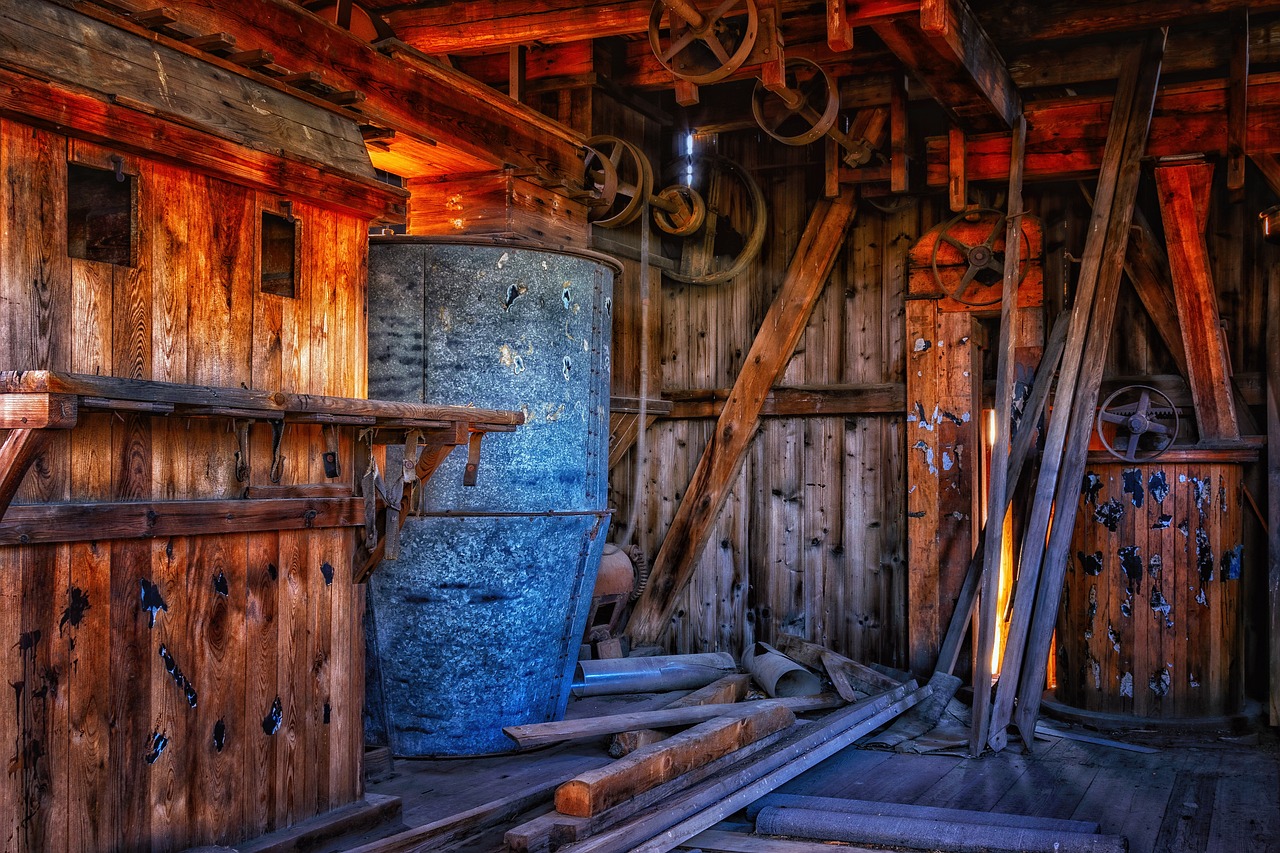
Container Upcycling Projects
When it comes to upcycling, containers are some of the most versatile items you can work with. They come in all shapes and sizes, making them perfect for transforming into stylish storage solutions that not only help organize your space but also add a personal touch to your decor. Have you ever thought about how a simple glass jar can be more than just a vessel for jam? With a little creativity, you can turn it into a chic storage solution for your craft supplies, kitchen utensils, or even as a unique vase for fresh flowers!
Let's dive into some innovative ideas for upcycling containers. One of the easiest projects is to use old glass jars. Whether they're mason jars or repurposed food jars, they can be painted, labeled, or decorated to suit your style. Imagine a row of colorful jars on your kitchen counter, each holding different spices or snacks. Not only does this keep your kitchen organized, but it also adds a pop of color and personality to the space. You can even create a DIY herb garden by filling jars with soil and planting your favorite herbs. This way, you have fresh ingredients at your fingertips while adding greenery to your home.
Another fantastic container project involves using wooden crates. These can often be found at farmers' markets or thrift stores and are perfect for creating rustic storage solutions. Stack them to form a unique bookshelf or lay them on their sides to create a stylish side table with storage underneath. You can even paint or stain the crates to match your decor. The beauty of wooden crates is their flexibility; you can use them in any room, from the living room to the bathroom, to hold anything from books to towels.
For those who want to get a little more adventurous, consider upcycling tin cans. After giving them a good wash, these cans can be transformed into planters, desk organizers, or even candle holders. Decorate them with fabric, twine, or paint to give them a new life. Just imagine a colorful collection of tin can planters hanging on your balcony or kitchen window, each one bursting with vibrant flowers or herbs. Not only does this add a lovely aesthetic, but it also helps reduce waste.
If you're looking for a more structured approach, you might want to consider creating a storage tower from various container sizes. This could involve stacking different sized boxes or containers to create a unique multi-level storage solution. You can customize it to fit your space and needs, whether it’s for toys in a child’s room or craft supplies in your studio. The possibilities are endless, and the best part is that you can do it all while keeping sustainability in mind!
To wrap it all up, container upcycling is not just about saving the environment; it's also about unleashing your creativity. By transforming everyday items into functional storage solutions, you can make your home more organized and visually appealing. So, the next time you’re about to toss that old container, think twice! With a little imagination and effort, you can create something beautiful and practical. Are you ready to start your upcycling journey?
- What types of containers are best for upcycling? Glass jars, wooden crates, tin cans, and plastic containers are all excellent choices.
- Do I need special tools for container upcycling? Basic crafting tools like scissors, glue, paint, and brushes are usually sufficient.
- Can I use upcycled containers for food storage? Yes, as long as they are properly cleaned and safe for food use.
- Where can I find containers to upcycle? Check your kitchen, local thrift stores, farmers' markets, or even your recycling bin!

Textile Storage Innovations
When it comes to upcycling, textiles offer a treasure trove of possibilities for creating unique and functional storage solutions. Instead of tossing away old clothes, linens, or fabric scraps, why not transform them into something useful? Not only does this approach help reduce waste, but it also allows you to infuse your home with a personal touch. Imagine turning a worn-out pair of jeans into a stylish organizer or repurposing an old tablecloth into a chic storage bag. The beauty of textile upcycling lies in its versatility and the endless creativity it inspires.
One of the most exciting aspects of textile storage innovations is the ability to customize your creations. You can choose fabrics that match your decor, or even mix and match patterns for a more eclectic look. For instance, if you're looking to create a storage basket, consider using a combination of vibrant colors and textures. This not only enhances the aesthetic appeal of your storage solution but also adds a splash of personality to your space. The process of sewing or weaving these items can be incredibly therapeutic and rewarding, making it a perfect weekend project.
Let’s dive deeper into some practical ideas for textile upcycling. You can create:
- DIY Fabric Baskets: Use old linens or fabric scraps to sew baskets that can hold everything from toys to magazines. These baskets can be designed in various sizes and shapes, allowing you to tailor them to fit your needs.
- Storage Bags from Old Clothes: Transform oversized t-shirts into tote bags or use the fabric from jeans to create sturdy storage pouches. This not only gives new life to your garments but also provides you with functional storage solutions.
- Organizers from Fabric Scraps: Small pieces of fabric can be sewn together to create organizers for your drawers or shelves. These can be customized in color and size to fit perfectly in any space.
To get started with your textile storage projects, gather the materials you need. Look around your home for items that are no longer in use but still have potential. Once you have your fabrics, think about the storage needs in your home. Are you looking for something to hold your craft supplies? Or perhaps a stylish way to store your children's toys? The possibilities are endless!
Moreover, sewing and crafting can be a fun family activity. Involve your kids in the process; they can help with choosing fabrics, cutting pieces, or even sewing simple designs. This not only teaches them valuable skills but also promotes sustainability from a young age. Plus, it's a great way to bond as a family while creating something beautiful and functional.
In conclusion, textile storage innovations are not just about practicality; they are about creativity, sustainability, and personal expression. By upcycling old textiles, you can create stunning storage solutions that reflect your style while contributing to a more sustainable world. So, roll up your sleeves, gather your materials, and let your imagination run wild!
Q: What types of textiles can I upcycle for storage solutions?
A: You can use a variety of textiles, including old clothes, linens, curtains, and fabric scraps. Almost any fabric can be repurposed into a storage item!
Q: Do I need sewing skills to create textile storage solutions?
A: While basic sewing skills are helpful, many projects can be done with simple techniques or even no sewing at all. Consider using fabric glue for quicker projects!
Q: How can I ensure my upcycled items are durable?
A: Choose sturdy fabrics and reinforce seams where necessary. Additionally, you can line your storage items with a more durable material to enhance their longevity.
Q: Can I personalize my upcycled storage items?
A: Absolutely! You can customize colors, patterns, and sizes to match your home decor. Adding embellishments like buttons or patches can also make your items unique.
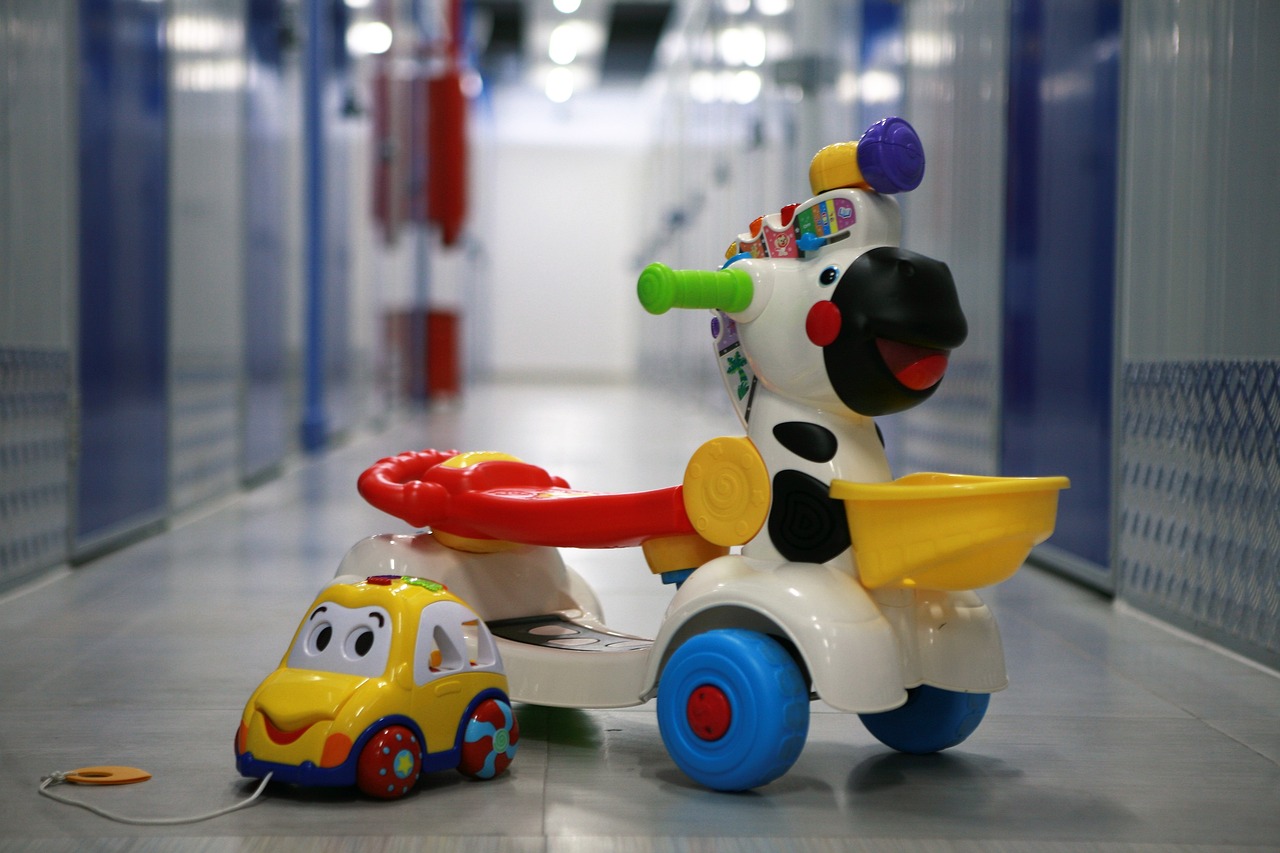
DIY Fabric Baskets
If you're looking for a fun and creative way to organize your space, making is an excellent project that not only declutters but also adds a personal touch to your home decor. With just a few materials and some basic sewing skills, you can transform old textiles into beautiful, functional baskets. Imagine turning that pile of old clothes or linens into stylish storage solutions that reflect your personality! Not only will you be saving money, but you'll also be embracing sustainability by giving new life to items that would otherwise end up in a landfill.
To get started, gather your materials. You’ll need:
- Old fabric (clothes, linens, or fabric scraps)
- Scissors
- Sewing machine (or needle and thread for hand sewing)
- Measuring tape
- Iron
First, measure and cut your fabric into the desired sizes. For a simple basket, you might want to create a rectangular base and four rectangular sides. A common size could be 12 inches by 8 inches for the base and 10 inches tall for the sides, but feel free to adjust based on your needs. Once you have your pieces cut out, it’s time to sew! Start by sewing the sides to the base, ensuring that the fabric is aligned properly. After that, sew the corners to create the shape of the basket. Don't forget to iron the seams for a crisp finish; it makes a world of difference!
For added flair, consider using contrasting fabrics for the interior and exterior of your basket. This not only enhances the visual appeal but also allows you to express your creativity. You can also embellish your baskets with decorative elements like buttons, patches, or even fabric paint. The possibilities are endless! Once your baskets are complete, they can be used in various ways:
- Storing toys in the living room
- Organizing craft supplies in your workspace
- Holding laundry in the bedroom
By making your own fabric baskets, you're not just organizing your home; you're also creating a unique piece that tells a story. Each basket can reflect your style and serve as a reminder of your commitment to sustainability. So, gather those old clothes and get crafting! You’ll be amazed at how something so simple can transform your space and contribute to a more eco-friendly lifestyle.
Q: Do I need to be an expert sewer to make fabric baskets?
A: Not at all! Basic sewing skills are sufficient, and there are plenty of tutorials available online to guide you through the process.
Q: Can I use any type of fabric?
A: Yes, you can use various types of fabric, but thicker materials like denim or canvas are recommended for sturdier baskets.
Q: What if I don’t have a sewing machine?
A: You can easily make these baskets by hand sewing. It may take a bit longer, but it’s definitely doable!
Q: How do I clean my fabric baskets?
A: Most fabric baskets can be spot cleaned with a damp cloth. If they need a deep clean, check the fabric care instructions and wash them accordingly.
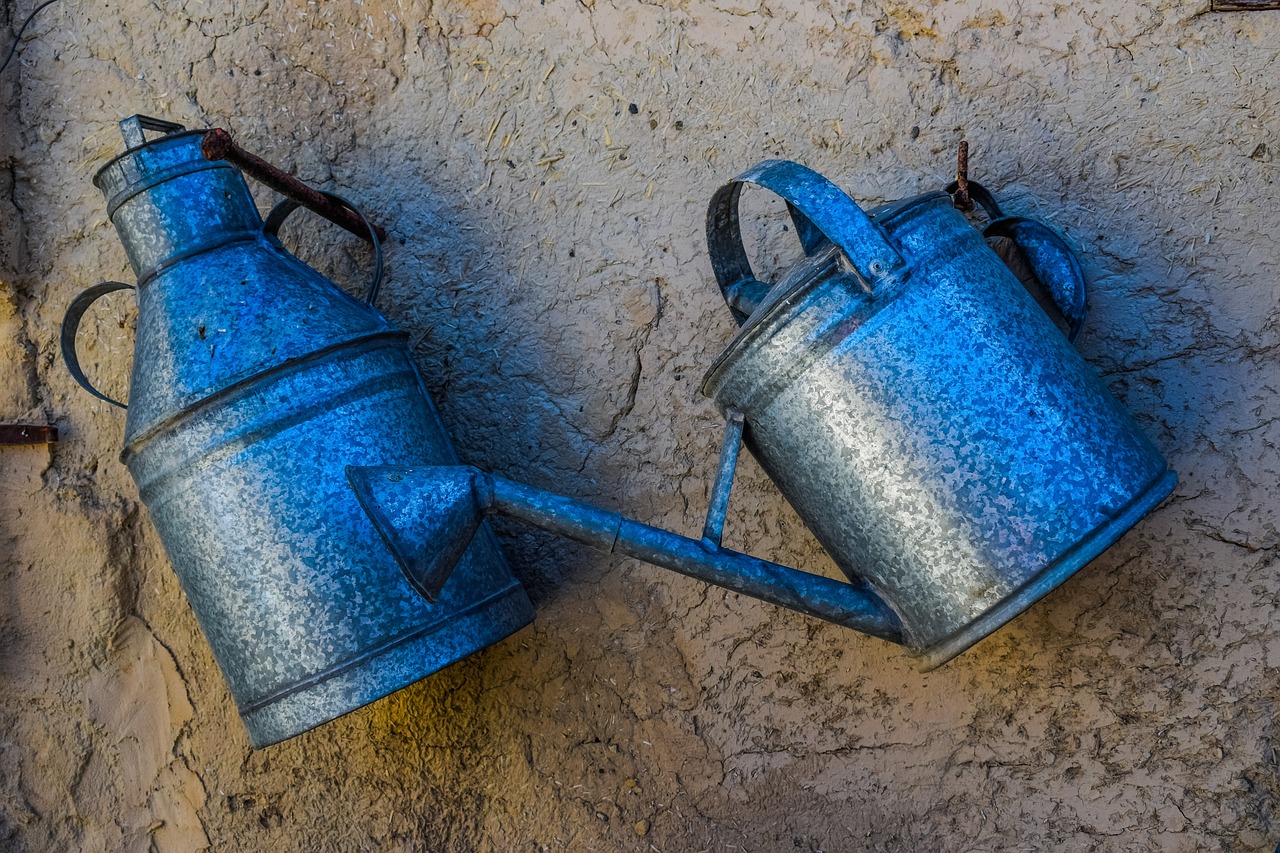
Using Old Clothes for Storage
Have you ever looked at your overflowing closet and thought, "What on earth am I going to do with all these old clothes?" Instead of tossing them into the donation bin or, worse, the trash, why not transform them into creative storage solutions? Upcycling old clothing not only helps to reduce waste but also adds a personal touch to your home decor. Imagine turning those worn-out jeans into a stylish storage bag or converting a forgotten t-shirt into a quirky organizer. The possibilities are endless!
One of the simplest ways to repurpose old clothes is by crafting storage bags. For instance, you can use a pair of jeans to create a sturdy bag that’s perfect for holding toys, books, or even craft supplies. Start by cutting off the legs at your desired length, then sew the bottom shut. You can even add straps using the remaining fabric or old belts. This not only gives your items a new home but also adds a bit of character to your space.
Another creative idea is to turn old t-shirts into hanging organizers. Simply cut the shirt into strips and braid them together to form a sturdy rope. Then, attach it to a wooden dowel or a sturdy branch and hang it up. This makes for a unique wall decoration that also serves as a functional storage solution for small items like keys, sunglasses, or even jewelry. It’s a fun project that can be completed in just a few hours!
If you have a collection of old sweaters, consider making fabric baskets. These can be used for anything from storing magazines to holding your knitting supplies. Cut the sleeves off the sweater and sew the bottom shut, creating a cozy basket. The texture of the fabric will add warmth to any room, making it feel more inviting.
For those who love a good DIY challenge, try creating a multi-pocket organizer from an old pair of cargo pants. Simply cut off the legs and use the pockets to store various items. You can hang this organizer on the back of a door or on a wall, making it a practical solution for keeping your essentials within reach. This way, you not only declutter your space but also give those old pants a new lease on life.
In addition to these ideas, you can also consider donating your upcycled creations to local charities or community centers. Many organizations are looking for unique storage solutions for their clients, and your old clothes can make a real difference in someone else's life.
By transforming old clothes into functional storage solutions, you not only declutter your home but also contribute to a more sustainable lifestyle. So next time you're about to toss those old garments aside, think twice! With a little creativity and some sewing skills, you can turn your unwanted clothes into beautifully organized spaces.
- What types of clothes are best for upcycling? Generally, thicker fabrics like jeans and sweaters work well for storage projects, while lighter fabrics like t-shirts can be used for smaller items.
- Do I need sewing skills to upcycle old clothes? Basic sewing skills are helpful, but many projects can be done with no sewing at all. You can use fabric glue or even no-sew techniques!
- Where can I find inspiration for upcycling projects? Websites like Pinterest, YouTube, and various DIY blogs are great places to find tutorials and ideas for upcycling old clothes.
Frequently Asked Questions
- What is upcycling and why is it important?
Upcycling is the process of taking unwanted items and transforming them into something new and useful. It’s important because it reduces waste, saves money, and encourages creativity. Instead of tossing out old furniture or containers, you can give them a second life, which is a win-win for both your home and the environment!
- What materials can I use for upcycling storage projects?
You can use a variety of materials for upcycling! Common household items include old furniture (like dressers and cabinets), containers (such as jars and boxes), and textiles (like clothes and linens). The key is to look at what you have and imagine how it can be repurposed into functional storage solutions.
- Can I upcycle furniture without advanced skills?
Absolutely! Many upcycling projects are simple enough for beginners. You can start with easy tasks like painting or sanding old furniture. There are countless tutorials online that can guide you through the process step-by-step, making it accessible for everyone, regardless of skill level!
- How can I create storage solutions from old clothes?
Old clothes can be transformed into a variety of storage solutions! You can sew fabric baskets, make organizers from jeans, or even create hanging storage from t-shirts. The possibilities are endless, and it’s a great way to reduce textile waste while adding a personal touch to your home.
- What are some creative ideas for upcycling containers?
There are so many fun ways to upcycle containers! For instance, you can paint jars to use as stylish storage for office supplies, or stack old boxes to create a unique shelving unit. You can also use baskets to organize items in a chic way. Just let your imagination run wild!
- Is upcycling a sustainable practice?
Yes, upcycling is a fantastic sustainable practice! By reusing materials, you help reduce landfill waste and decrease the demand for new products, which often require significant resources to produce. It’s a simple yet effective way to contribute to a healthier planet while beautifying your home.
- Where can I find inspiration for upcycling projects?
You can find inspiration for upcycling projects everywhere! Social media platforms like Pinterest and Instagram are full of creative ideas. Additionally, DIY blogs and YouTube channels often showcase amazing upcycling transformations that can spark your creativity. Just dive in and see what catches your eye!


















